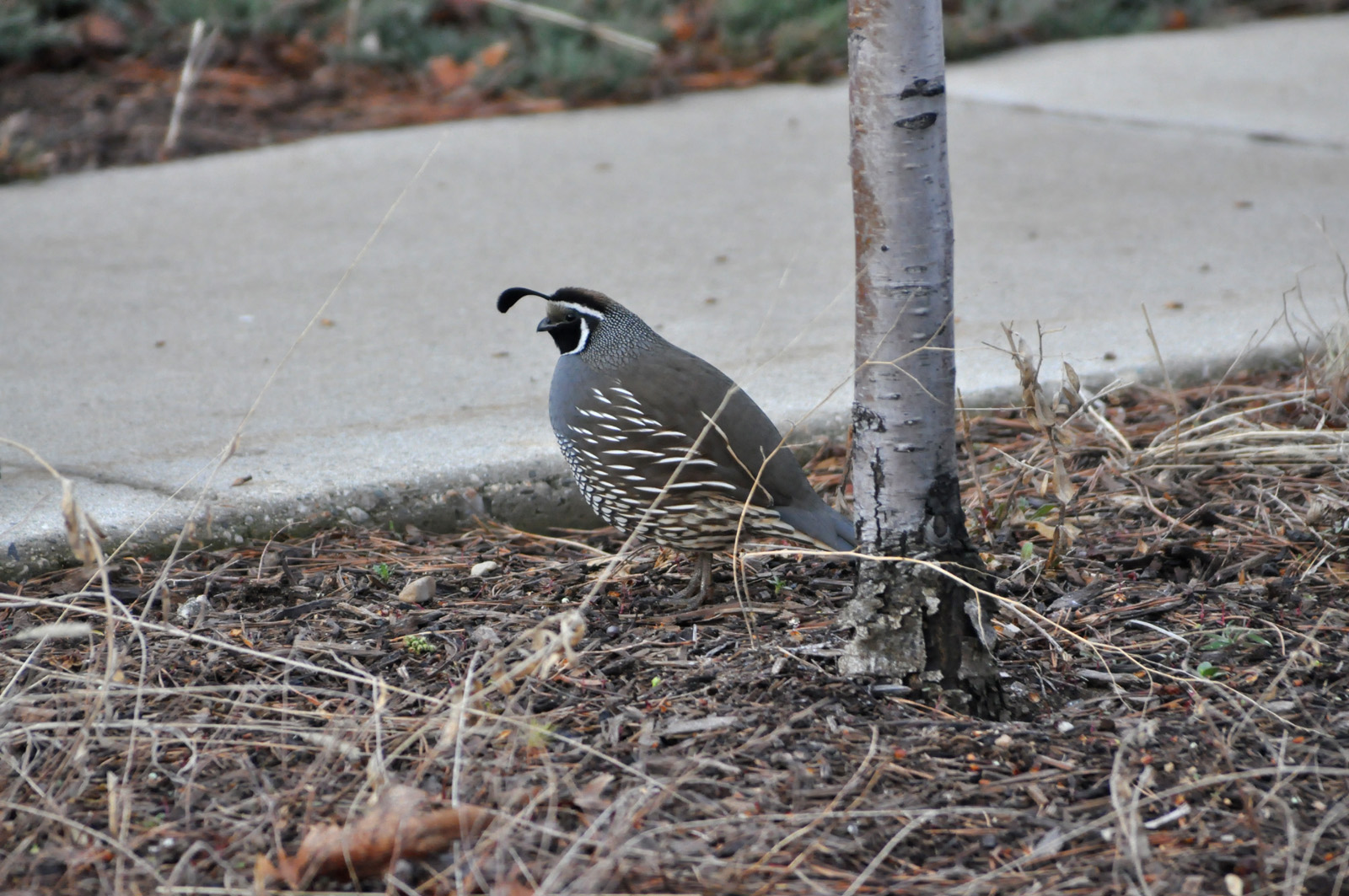
California Quail
These quail are native to the Pacific coast, from Oregon down to Baja California. Californians of course, don't call them California quail, but valley quail. In 1869 General Gibbon introduced the first fourteen pairs in the vicinity of Fort Douglas, Salt Lake City. Sightings of the quail with chicks were reported two years later. Other introductions have been made since to establish a healthy California quail population in and around Salt Lake City. The top of a California male's head is black. These quail range in size from 9-11 inches and weigh 6 or 7 ounces. California quail thrive in brushy areas where they have ready access to water. They need dense brush where they can escape from predators, but prefer more grassy, herbaceous cover to nest in. Seeds, grains, berries, and especially clover make up their diet. They can actually live without water if they can eat enough moist, leafy greens-but in the desert that is very uncommon. This quail is a species that is very adapted to living near mankind. They are a common sight all over Salt Lake City in parks, golf courses, and even in people's back yards. Listen in the springtime for a male calling to his mate chi-ca-go, chi-ca-go, or you might be lucky enough to spot a female leading a dozen or so chicks to a feeding area.
Through the winter, the birds live together in coveys of 30-40. Beginning in early March they pair off, and begin nesting in May. Females make grass lined nests among weeds, and lay from 10-16 eggs. The chicks hatch after 23 days of incubation. Both parents take care of the chicks, and if one parent is killed, often an unmated first year male will take over as a foster parent. Occasionally the female will lay a second clutch of eggs, and the male will assume full responsibility for the first brood. As a result of diverse predators, there is about a 50% death rate among chicks.
 |
Image taken April 6, 2011, in Sandy, Utah. Nikon D-90 with Tamron 28 to 300 zoom lens. |